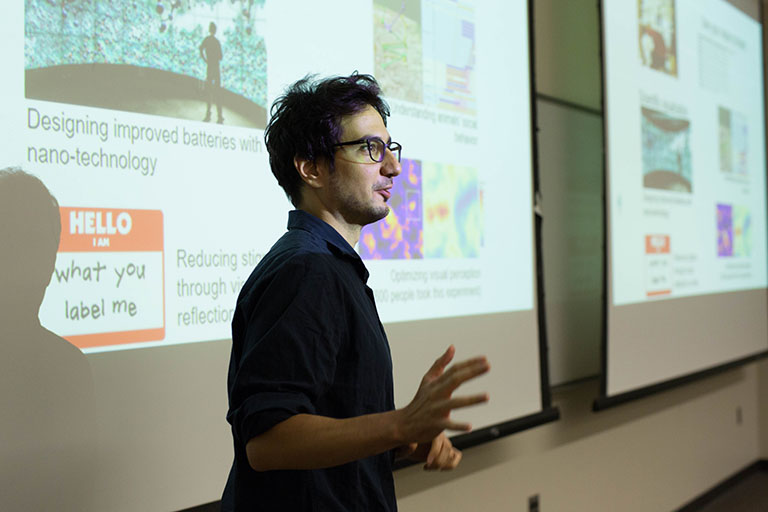Researchers in this area are involved in all aspects of big data, from mining, extraction, retrieval, and analysis, to curation, sharing, and preservation, as well as governing policy. They also investigate the applications of data visualization and machine learning, or AI, to enhance user understanding and improve human task performance.
Data Research

Interaction
Francesco Cafaro is using funding from an NSF EAGER grant to investigate how cognition theories can be used in designing interactive installations that improve people’s understanding of causation and correlation while exploring displayed data sets. The goal is to develop bridges between cognition, human-computer interaction, and long-term learning of STEM concepts found in museum exhibits. The findings will inform the design of novel, tangible, and natural user interfaces for informal learning.

Cognition
In his NSF grant, Khairi Reda proposes re-architecting data visualization tools to support bi-directional analysis. In this new paradigm, analysts will be able to share their hypotheses and models with the system, which will generate visualizations directly responsive to those inputs, while visually emphasizing any discrepancy between data and models. The team is developing an understanding of how people form hypotheses about data, and testing various expression techniques—from natural language to concept mapping and graphical sketching—utilizing human-centered design methods.
Privacy
Kyle Jones’ IMLS grant-funded project researches privacy issues associated with mining and analyzing student data, in a collaboration between IU Indianapolis and researchers at six other academic institutions. The three-year study included student interviews to identify values, perspectives, and issues; student surveys to develop generalizable results; and scenario-based focus groups to explore possible learning analytics applications that respect and break expectations of privacy.

